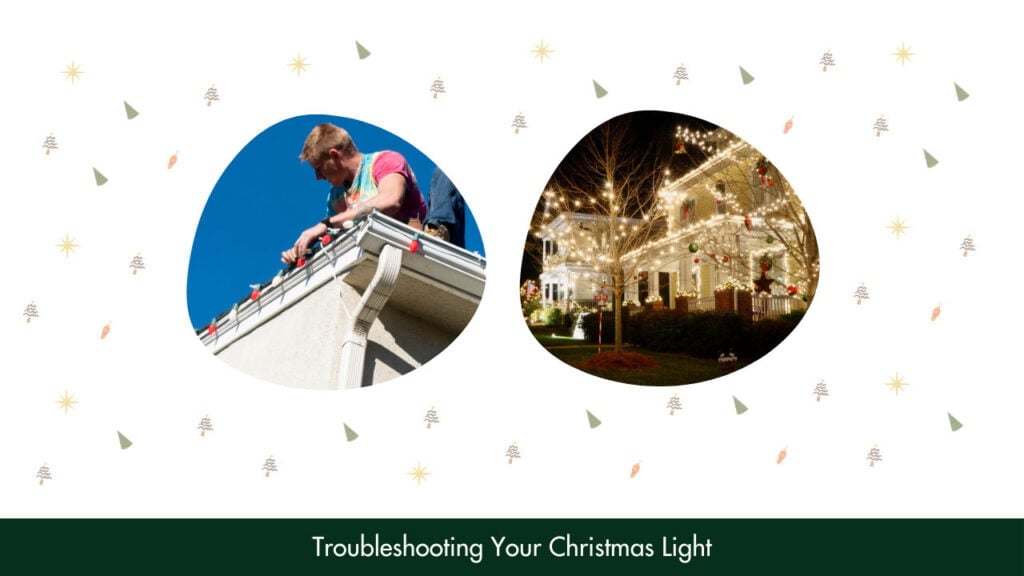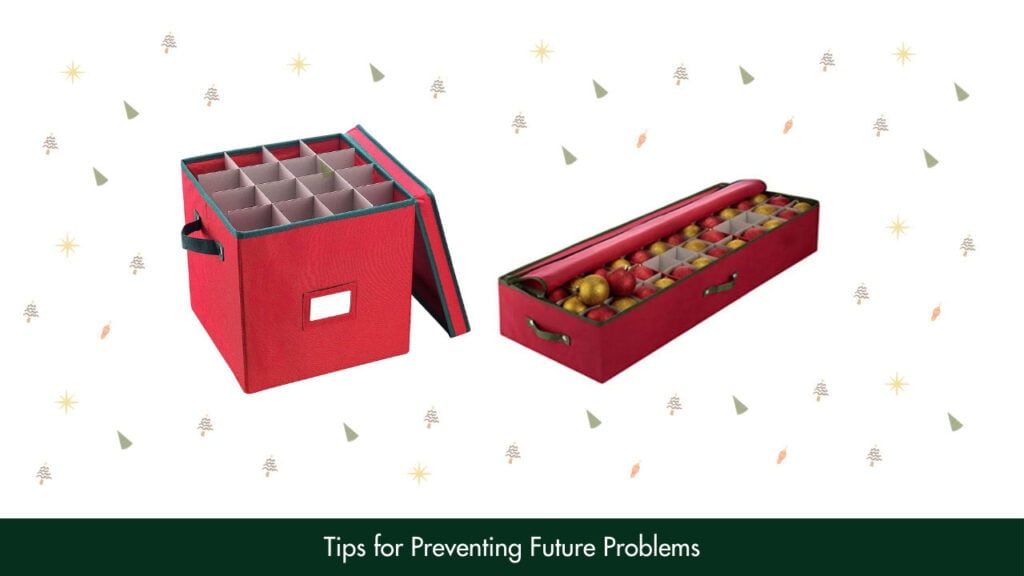How To Fix Christmas Lights?
Your Christmas lights may malfunction due to several reasons, including loose connection, broken sockets or fuse, or burnt bulbs. These problems can be easily resolved by checking the connection and replacing the faulty parts, and you can prevent them from occurring again by following some precautions. Finding out the exact issue with an electric light […]

Your Christmas lights may malfunction due to several reasons, including loose connection, broken sockets or fuse, or burnt bulbs. These problems can be easily resolved by checking the connection and replacing the faulty parts, and you can prevent them from occurring again by following some precautions.
Finding out the exact issue with an electric light string can be incredibly frustrating and annoying, especially when you’re in the holiday spirit.
Burnt-out holiday lights are quite easy to fix if you know what exactly went wrong – yes, even the cheaper ones. They require minimal time and investment, and the simplest fix can help you avoid accidents this Christmas and holiday season.
So, here’s a step-by-step guide on repairing Christmas lights quickly and efficiently by identifying the right issue. Keep in mind that these steps will also help you fix your outdoor lights for Christmas.
How To Fix Christmas Lights: A Step-by-Step Guide
Tools and Materials Needed
- Bulb or voltage tester
- Replacement for faulty Christmas light bulb
- Replacement Fuse (electrical)
- Wire cutters
- Diagonal pliers
- Small, flat screwdriver
A bulb or voltage tester is a tool used to check if electricity is properly flowing through a socket, plug-in (computing), and even in incandescent light bulbs. If the voltage tester doesn’t respond, it denotes faulty electrical wiring, a broken socket, or a bad bulb. Wire cutters and pliers will be required to repair Christmas lights, especially for fixing the electrical connection or the circuit breaker box.
Finding the Problem In String Lights

String lights aren’t the most durable holiday lights since various malfunctions can occur throughout the entire string. But our informational guide will help you identify the possible issues to fix your light strings quickly.
1. Check If The Power Source Has Electric Current
Among the various issues that can make LED string lights faulty, improper electrical current flow sits at the top of the list. If you have attached the light string to the electrical connector, and it’s still not working, check if there’s power in the AC power plugs and sockets.
You can do this using voltage testers or a pen tester. Are you scared to try these tools? Simply plug in a functional light string to check if it’s working.
If the string of Christmas lights isn’t working or the test light doesn’t respond, go to the breaker box to repair the shunt.
2. Check Your Christmas Light Fuses
The next thing you should check regarding your Christmas light is the possibility of a bad fuse. Most strings of lights have two tiny fuses on each light, which are usually present behind the small sliding door in the Christmas light plug. If you find that they’re popped, then you’ve got to figure out how to repair the fuse.
3. Check For Bare Wires And Burnt Out Bulbs
If you see that the light strand is not working even after switching out the fuses, there’s either a faulty bulb or an internal break in the wires. You have to be extremely careful when dealing with wires, but changing the problem bulb is comparatively easy. We’ll explain the process in greater detail in the next section.
Troubleshooting Your Christmas Light

Before you enthusiastically work on your outdoor light ideas or decorate your Christmas tree, it’s important to check for any faults and troubleshoot them to prevent any accidents. Based on the different problems we’ve discussed in the previous sections, here are the steps to troubleshoot them:
1. Change The Bad Bulb
Identifying the faulty bulb can be really tricky, given there are quite a few of them. Light testers are very handy in this case – or you may simply plug in the Christmas light set into the outlet and see which ones aren’t working. Most string lights require every bulb to function for electricity to run through its entire length, so even one bad bulb may cause significant problems.
Sometimes, gently tightening the bulb’s socket secures the loose connection, but if that doesn’t work, you must replace the bad bulb. To do that, unplug your Christmas light, remove the bad bulb, and replace it with a new bulb with the same voltage, design, and size. When you get the new bulb back in its place, you’ll successfully establish the electrical connection again.
Tip
While replacing the incandescent light bulb, look at the two wires at the base, and ensure they’re in their place and not touching each other.
2. Change The Fuse
If your string of lights won’t turn on at all, then you’re with a malfunctioning fuse. Simply slide back the plastic cover on the plug to access the male end of the fuse. Then, carefully remove the fuse using a screwdriver and replace it with a new fuse, and you’re good to go!
3. Don’t Let Your Outlet Overload
A common reason your string of lights flickers or won’t stay on is the heavy wattage demand on a single electrical outlet. If this is your case, you should consider dividing the light string among two or three outlets. Another way to prevent overwhelming wattage demand on a single outlet is by purchasing a twist-on wire connector or splitter which helps evenly distribute current flow.
Moreover, you can purchase light strings with a voltage requirement less than that of your outlet. To learn the capacity of the outlet, go to the breaker box and find the amp value shown – and, ideally, you should purchase lights. Alternatively, you can use solar-powered Christmas lights to prevent overloading and bulb burns.
4. Repair the Shunt
Every Christmas light has sockets that contain something called a ‘shunt.’ The shunt (electrical) maintains the current flow, especially during bulb burns. But when it malfunctions, entire sections of a Christmas light turn dark even if you replace one bulb. You’ll need a shunt repairer or kit to troubleshoot this problem.

Tips for Preventing Future Problems
1. Take Down Your Christmas Lights Carefully
An inexpensive holiday light set isn’t the most durable decorative alternative, so it’s important to handle them with care. Don’t pull the lights too hard since it can lead to broken bulbs, wiring, or socket, making the entire string malfunction. When you’ve taken down the lights, plug them into the outlet again to ensure they still work.
2. Store Them Properly
A common mistake many consumers make is throwing away the containers or boxes the Christmas light originally came in. This makes storing them properly a tedious job. Moreover, you must not entangle the light strands into tight balls since detangling them will be very frustrating, especially if you’re about to fix Christmas lights.
Loosely bunch them up, making sure the light bulbs don’t clash with each other – this will make the decorating process a lot easier for your next holiday season.
3. Upgrade Your Christmas Lights
On average, a Christmas light lasts up to three holiday seasons, sometimes even less, so you can’t always fix them. To ensure your Christmas spirit lasts longer, consider switching to LED lights. LED (Light-emitting diode) also use significantly less electricity and are much safer to handle than traditional light strings.
4. Drape/Attach the String Lights Properly
Draping the string lights on a Christmas tree is harmless and easy, but you must be careful while attaching them to the wall or siding. Use plastic light hangers for this purpose instead of staplers since the metal can break or fray the wires, which can permanently damage your holiday lights.
Why won’t my Christmas lights turn on?
If your Christmas lights don’t turn on at all, then there must be a problem with the fuse, shunt, or outlet. For a faulty fuse, access the male end of the light plug, and replace it with a new one.
Got a broken shunt? Purchase a shunt repairing kit and follow the manual to fix it. Moreover, you can try distributing your string lights among two or more electrical outlets to prevent overloading a single one.
How can I tell if a bulb is burnt out?
A light bulb in the string might not work due to a number of reasons – it can be a loose electrical connection, improper plugging, or, most commonly, a burnt bulb. To check if a bulb is burnt, carefully look at the filament connecting the negative to the positive contact, which is held by a glass mount.
If you see the filament is not taut but rather loose and burnt, you have the classic case of a burnt bulb.
Can I replace individual bulbs on my Christmas lights?
Of course. We’ve covered the ways to replace individual light bulbs further up in our article. Many string lights don’t light up all the way if even one bulb is malfunctioning, so it becomes imperative to change individual light bulbs in some cases.
What is the best way to store Christmas lights to prevent damage?
The best way to increase the longevity of your string lights is by storing them properly. And this includes storing them in their designated packaging boxes, not bundling them up into tight balls, and keeping them away from moisture. Remember to clean them after you take them off your tree or walls to prevent debris buildup within the wires and fuses.
Can I use LED bulbs to replace traditional incandescent bulbs on my Christmas lighting?
LED bulbs are a much more popular alternative to traditional bulbs due to their durability and energy-saving properties. Switching out the old bulbs with LED ones from your Christmas lights is a smart move, especially if you don’t want high energy bills to dampen the holiday mood.
Moreover, they are much safer to use and usually don’t cause accidents, such as electrical fires. You can also purchase a new string of LED lights with an insulator (electricity) if you’re worried about other electrical risks.
Is it safe to use Christmas lights that have a frayed cord?
No, you shouldn’t use Christmas lights with frayed cords – they will expose you to higher chances of electrocution or, worse, electrical fires. If you can’t fix the frayed cord, it’s best to replace the entire light string with a new one. They aren’t that expensive anyway, and you’d rather not set your house on fire.
What should I do if my Christmas lights get wet or are exposed to moisture?
Ideally, you must keep your Christmas lights away from any water source, but accidents do happen, and the string lights may be exposed to moisture. In this case, you must ensure it’s unplugged and then wipe away the moisture with a microfiber cloth. You can also let the cord dry in the sun – but if it gets too hot, the entire string light might malfunction.
To Sum It Up
Many people lose a lot of money by throwing out their Christmas lights when they find they aren’t working. As you’ve read in this article, there are various ways you can revive a faulty Christmas light by changing the bulbs and fuses or reconnecting some wires. Moreover, we’ve curated some tips and tricks for handling your holiday lights to ensure they last long.
However, if you’re having persistent issues with your power supply or electrical outlets, we recommend calling an electrician to resolve the issue at its root.
That being said, we’ll be signing off for now. If you liked reading this informational guide, check out our article, ‘Best Christmas Net Lights.’
Until next time, goodbye!
